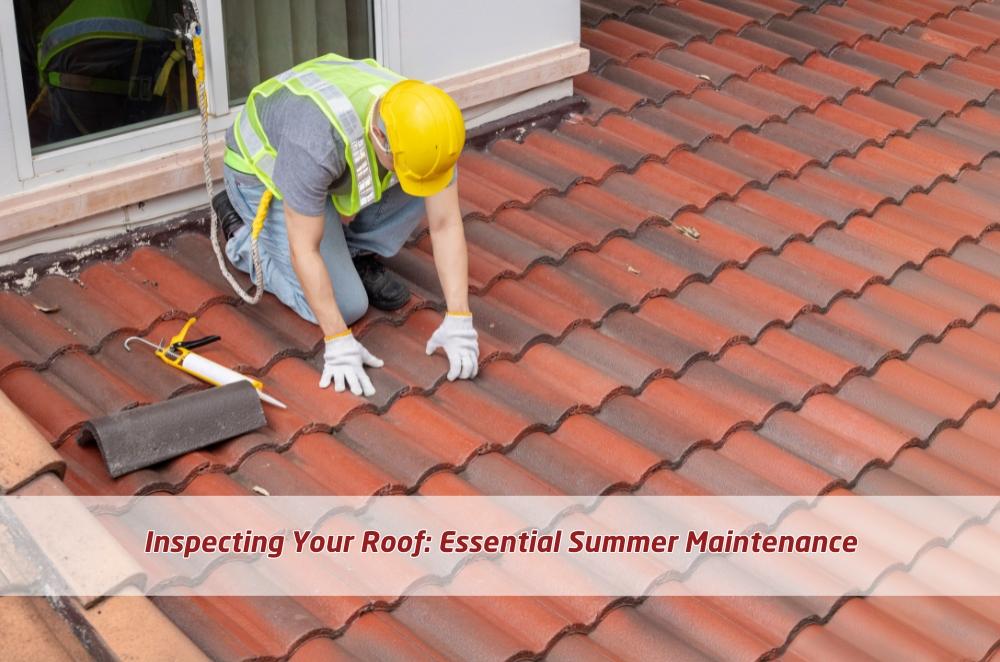Inspecting Your Roof: Essential Summer Maintenance

Sydney summers mean sun-drenched days, balmy evenings and the possibility of significant roof damage. Intense heat, sudden downpours and hail storms can take a toll on even the most substantial roofs. Neglecting these concerns can lead to drastic results and transform a minor leak into a significant scenario needing immediate roof repairs. Thus, proactive roof maintenance in summer is critical in protecting your home and investment. This article explores the multiple aspects of summer roof inspections, from basic precautions and structural checks to damage detection, drainage and ventilation, and professional maintenance. Recognising these critical factors can help you do what is necessary to maintain a watertight roof condition and keep your home safe during the summer months.
Summer safety tips for roof inspections
Before you even consider shimmying up on your roof, safety should be your No. On sunny summer days, roof surfaces can get dangerously hot, causing burns and heatstroke. Here are some vital safety precautions:
-
Timing is essential: Morning is best for performing a roof inspection in the early morning or late afternoon, resistance to peak sun.
-
Wear the right clothes: Sturdy shoes with good grip, long pants, and long-sleeved shirts are advisable for protecting skin from the sun, rocks, branches, and more. A hat and sunglasses are a must, too.
-
Buddy system: Always inspect your roof with someone else. Have a local person who can guide you and watch over you.
-
Securing: Ensure the ladder is stable and secure on solid ground. Do not tilt it too far one way or the other.
-
Know your limits: If climbing on the roof is not your thing, leaving it to the professionals is always best. No job is worth putting your safety at risk.
Thoroughly inspecting your roof's structure
Once you’re safely in your spot, it’s time to get down to business. A proper inspection should cover all the essential roof components:
-
Shingles/tiles: Check for cracked, broken, or missing shingles or tiles. Focus on places where they meet.
-
Flashing: Inspect the flashing around chimneys, vents, and skylights to ensure it is safe and not damaged.
-
Gutters and downspouts: Make sure they are clear of debris. Check for leaks or damage.
-
Fascia and soffit: Look here for any rot or decay.
-
Roof sheathing: It can be harder to see, but check the roof sheathing for signs of sagging or warping, which may signal structural problems.
Identify and fix roof damage early
Detecting roof damage early can prevent a lot of hassle and expense. Here are a few red flags to watch for:
-
Leaks: Brown stains on ceilings or walls indicate a leak.
-
Missing granules: When shingles begin to lose granules, they will often collect in your gutters.
-
Moss or algae growth signs can signal moisture issues that must be resolved.
-
Sagging roof: A sagging roof is a major structural problem that needs to be dealt with urgently.
-
Damaged flashing: Broken or loose flashing can cause leaks.
If you see any of these signs, you need to act promptly. Calculated repairs–some contingencies can be made on your own. Please consult a licenced roofing contractor for more advanced damage when in doubt. Neglecting roof repairs can exacerbate the problem, particularly during the summer storm season.
Evaluating roof drainage and ventilation
Water should not reside on your roof for long and requires adequate ventilation. Here's what to check:
-
Gutters and downspouts: Be sure they're clear of debris. Water must drain freely from your house.
-
Ventilation: Make sure your roof vents are clear and working. Proper ventilation will prevent the accumulation of heat and moisture. Look for ridge vents, soffit vents, and box vents.
-
Grading: Surrounding the house, the ground should slope away from the foundation to avoid ponding.
Professional roof maintenance for enhanced protection
Household DIY roof inspections are helpful, but professional roof maintenance is needed for lasting protection. A licenced roofing contractor can:
-
Hire a handyman for a complete examination: They know what to look for that you may not see.
-
Make repairs as needed: They can do the small takedowns and significant replacements.
-
Offer preventative maintenance: They know what to look for and can help take steps to prolong your roof's lifespan.
-
Provide professional guidance: They can answer questions and suggest the best roofing solutions for your residence.
Conclusion: Safeguarding your home
Summer is about enjoying yourself in Sydney, but we must be mindful of our roofs. Providing the glance-up inspection and preparing everything for the summer months can ultimately protect your house from the perilous summer elements while saving you money for repairs. Remember that preventative maintenance now can help protect your most significant investment. So get your hat, some sunscreen and a pal, and put your roof in the pet care routine it deserves. Your house will thank you for this.
- Art
- Causes
- Crafts
- Dance
- Drinks
- Film
- Fitness
- Food
- Spellen
- Gardening
- Health
- Home
- Literature
- Music
- Networking
- Other
- Party
- Religion
- Shopping
- Sports
- Theater
- Wellness


